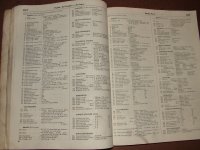tobywood13
Member
Hi all, recently after some slightly disappointing fuel economy figures I did some research on ways to improve it. I came across the warm air pipe that sits on the top of the exhaust manifold and goes into the bottom of the airbox, some people suggested having this disconnected would worsen fuel economy.
I've had two Pandas, and on both this pipe was always disconnected, standing shiny and proud at the front of the engine bay without me ever knowing what it was for. I have now connected it to the air box, and immediately I noticed the car's performance seemed to worsen slightly when stomping on the throttle at low revs, as if it were bogging down slightly. It felt a bit like too much fuel with not enough oxygen, a slight delay before revs picked up and the acceleration kicked in. Or maybe I'm imagining it.
I have a 1993 999cc single point injection car, so I suppose it would be vulnerable to fuel icing in these winter months and I should probably leave it connected. My question is, does connecting this tube actually improve economy? In my head, having warmer air entering the intake would be a bad thing, as it would be less dense and therefore less oxygenated. This would cause a slightly rich mixture, worse power, and worse economy. Is this correct?
Any thoughts on whether the silver pipe does make a difference on performance/economy? Is it something you're supposed to connect in the winter but disconnect in the summer?
I've had two Pandas, and on both this pipe was always disconnected, standing shiny and proud at the front of the engine bay without me ever knowing what it was for. I have now connected it to the air box, and immediately I noticed the car's performance seemed to worsen slightly when stomping on the throttle at low revs, as if it were bogging down slightly. It felt a bit like too much fuel with not enough oxygen, a slight delay before revs picked up and the acceleration kicked in. Or maybe I'm imagining it.
I have a 1993 999cc single point injection car, so I suppose it would be vulnerable to fuel icing in these winter months and I should probably leave it connected. My question is, does connecting this tube actually improve economy? In my head, having warmer air entering the intake would be a bad thing, as it would be less dense and therefore less oxygenated. This would cause a slightly rich mixture, worse power, and worse economy. Is this correct?
Any thoughts on whether the silver pipe does make a difference on performance/economy? Is it something you're supposed to connect in the winter but disconnect in the summer?
- Model
- CLX
- Year
- 1993


